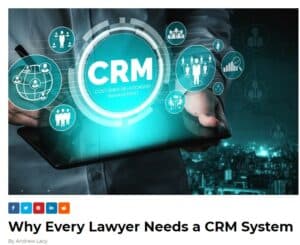AT&T has promised to reimburse the Department of Columbia’s Desk of the Special Counsel $1.5 million to resolve a case involving that it overcharged the Department and governmental organizations for cellular telecommunication services. In early February, the D.C. Office of the Attorney General lodged a petition stating that AT&T deliberately billed for functionalities, updates, and other activities that Washington didn’t require, as well as failing to follow specifications to deliver the best premium and lowest-priced plan options. AT&T refuted the allegations and claimed the matter had been settled. “Although we stand to argue the accusations in the action, we resolved to prevent lengthy and costly prosecution,” AT&T stated in a release for Fierce.
The D.C. Office of the Attorney General also accused AT&T of profiteering throughout a six-year span from 2012 until 2018, which culminated in AT&T invoicing large sums of money incorrectly. In complement to cellular service, AT&T’s service agreement provided additional items to customers’ bills. “My department filed litigation over AT&T to guarantee that this really met its design seems to be the process to offer the Metropolitan administration with a most affordable telephone and broadband services possible. In reporting the agreement, State Advocate Karl Racine said, “They are glad that upon filing action, AT&T attempted to conclude the issue in a way that makes the Department as well as its residents whole.”After the complaint was first initiated in 2018, from a client who ran a premium efficiency service, and OAG alleged AT&T breached the Department’s False Allegations Rule (FCA), probing and interfering.
AT&T was accused of failing to do three things, according to the litigation: provide periodic price minimization data, give consistent base pricing structure, and deliver D.C. customers the least fee for such services. Periodic studies are designed to assess and discover customers who are constantly receiving roaming fees or inadequately a support contract, so they could be switched to a much more value or less costly plan, correspondingly, for revenue management. As per the latest data available, this is a routine practice that saves customers between 20% or 30% off cellular connectivity. The lawsuit said, though, because AT&T rarely advised lower-cost packages for unused cellular connections, and that D.C. “frequently had over 1,500 consumers including no engagement on the services for weeks and even full months throughout the pertinent time frame.”
Additional reports were provided by AT&T, according to the OAG, “frequently bearing fraudulent and confusing headings that contained words like ‘program efficiency’ and ‘tariff plan evaluation,'” but they lacked the statistics or details required to fulfill the agreement’s obligations. Due to AT&T’s lack of standardization, the amounts billed to D.C. corporations varied greatly, so the state needed to uncover overcharging on the itemized receipt or shared folder. Many customers were not given a data package whatsoever, according to the OAG, resulting in “hundreds of dollars” for network overdraft costs.
This lawsuit demanded triple times the quantity of money that’s been reportedly overpaid by consumers, as well as fines and additional charges for every incorrect invoice presented. Apart from “huge amounts of money,” it’s unknown how large the sum ended up being. AT&Thas a long and illustrious history dating way to 1885. Throughout the 1970s, the Clayton Antitrust Statute was used to bring charges on the company. The agreement negotiated in 1982 permitted AT&T, often referred as Ma Bell, to preserve its length of service. In terms of this deal, the industry’s local mobile service was divided into 7 “Baby Bells” in 1984.
The legal battles
AT&T has managed to defend themselves against antitrust claims in the past. During 1913 and 1956, this company struck deals with the American administration that enabled it to evade dissolution for the majority of the decade. By component of a 1956 deal, AT&T was required to remain from other enterprises. This company’s potential to employ packaging to extend its dominance to certain other sectors was hampered as a result. The ultimate case, which started around 1974 but ended in 1982, had decided over AT&T. During 1984, these Baby Bells became eventually separated off Ma Bell, so they took over AT&T’s domestic telephone service division. This parent business kept its length of service and also was given permission to branch out into electronics as well as other fields.
A breakup’s advantages
The separation of AT&T resulted in a slew of direct efficiency gains. For years, AT&T refused to let customers link phones made by other companies to its network. They stated that such devices could harm signal strength. AT&T also refused to offer its very own smartphones to customers, forcing everybody else to rely on AT&T for phone rentals. Following the separation, the Baby Bells regained control of direct customer contacts and lifted the prohibitions. This industry for supplying devices to customers grew quickly. Telephone prices fell, performance rose, and the practice of renting telephones became obsolete.
Competitiveness in phone networks was another important advantage of AT&T’s separation. Customers could select from a variety of transmitters with the Baby Bells. MCI as well as Sprint competed against AT&T in the market. Prices decreased as competitiveness and technologies improved. In 2019, most Individuals were no longer paying per-minute fairly long charges for domestic calls. Nevertheless, per-minute rates for international calls and cell phone plans remained widespread.
The breakup being criticized
The most serious criticism leveled at the split is because it might have caused many people to miss out on increased access. The requirement to utilize the Baby Bells’ domestic telephone service kept rates modest inside the initial stages of the web. This same Baby Bells were mostly sluggish to improve their connections since they were monopolistic in the major markets. Throughout the nineties, AT&T was indeed a leading online service supplier because of its rapid adoption of internet innovation. Most consumers would’ve had access to advanced internet connectivity sooner provided AT&T had retained ownership of domestic telephone lines. Most of the Baby Bells waited far too long, handing over a large portion of the internet service industry to television and cellular companies.
One criticism leveled towards the split is because it seemed unnecessarily painful. A key point now is because AT&T would’ve have faced rivalry from cable operators and cell phone carriers elsewhere in future. A reality that most of the Baby Bells have been eventually merged within a single firm adds credence to the argument that this split was unwarranted.
A breakup’s repercussions
The Baby Bells went on to become one of the greatest polarization in history. AT&T had indeed compensated for new hardware, and the operations had been operational and profitable since the beginning. Even as states eased cellular limitations, the Baby Bells started to consolidate and purchase out one another in order to expand their coverage regions. Around 2018, the majority of that same Bells had re-united as AT&T, one single corporation.

















